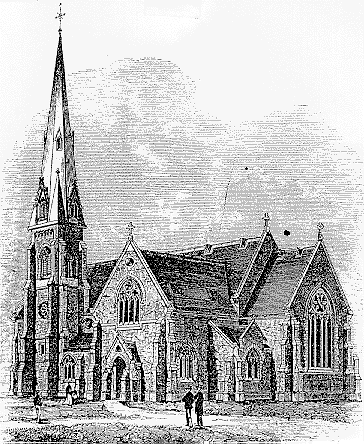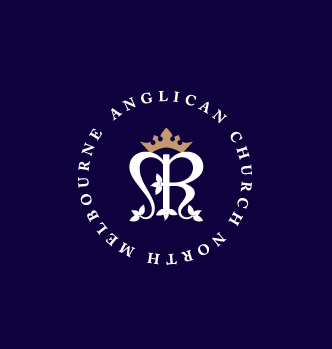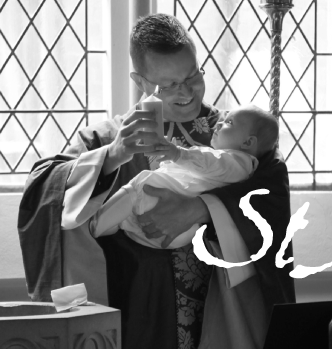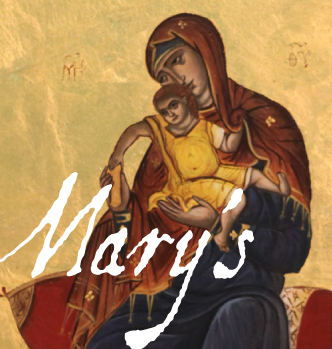HISTORY
A Short History of Saint Mary’s and North Melbourne
Beginnings
The history of St Mary’s begins in 1853. This was just 18 years on from the arrival of the first white settlers who came over from Tasmania and founded Melbourne in 1835. The discovery of gold in 1852 turned Melbourne overnight from a quiet rural depot into a bustling boom town bursting at its seams with adventurers who arrived from everywhere in their tens of thousands. The land to the north of the town was quickly criss-crossed by roads leading to the goldfields and settled by those who sought to make money from the diggers rather than the diggings – blacksmiths, wheelwrights, provisioners, hardware merchants and hoteliers.

The Dutch Oven and the Schoolhouse
The first Sunday services for these settlers were held in the open air but soon a prefabricated zinc building was put together on the site where St Mary’s now stands. This served as a Church on Sundays and as a schoolhouse during the rest of the week. It had no name but was commonly known as The Dutch Oven because it was so hot in summer. In 1856 a larger timber schoolhouse-cum-church was built and at its opening on August 15th of that year the area was officially declared a parish and called Saint Mary’s. It was the first parish in the Colony to be dedicated in the name of Our Lords mother, the Blessed Virgin Mary.
The Architect’s Dream
Building of the present stone church commenced in October 1858 and the building, partially completed, was opened for worship on March 11th 1860. Completion of the building took another five years. The architect was Lloyd Tayler and the new church was one of the first in this part of the world to be built in the Gothic revival style. It is cruciform in ground plan with large transepts. It was the first church in the Colony to have clerestory windows and its east window at the time of its construction was the largest in the Colony. The spacious interior, wide aisles separated from the nave by rows of arches, and the vaulted crossing all reflect the confidence and optimism of the period.
Harder Times
The vision of the original builders proved too much of a challenge, however, for those who followed. Although very heavily populated, during the rest of the nineteenth century North Melbourne became increasingly industrial and its working class population lacked the resources to fill in the Gothic shell left to them by their forebears. Writers of the period refer to the canvernous interior of St Mary’s and to the congregation as ‘foot soldiers’ in the battle of life.
The Priest for most of this period, however, was an intellectual high flyer – Canon Robert Potter – who lectured in Theology at Trinity College in the University and was the author of works on theology and ethics, a pamphleteer on controversial issues of the day, a novelist and the writer of one of Australia’s first works of Science fiction ‘The germ Growers’. A tractarian churchman, he was Priest at St Mary’s from 1863 to 1893.
Aggressive Evangelism
Early in the twentieth century the churchmanship of St Mary’s swung to the other extreme under two energetic evangelicals. First the Revd Herbert Begbie (1904-1908) who moved on to Sydney and then the Revd F.W. Frewin, the son of a medical doctor who had been converted during the 1875 Moody and Sankey mission to England. Open air preaching, accompanied by rousing tunes from the parish brass band and lantern slide lectures were a feature of his ministry at St Mary’s. When he left St Mary’s in 1918 he claimed that he had preached in every street in the parish.
Even Harder Times
By the end of the 1920s much of North Melbourne had been industrialised and the area also contained some of the worst housing pockets in the country. Best known among these was ‘Happy Valley’. Its makeshift unserviced dwellings were the last refuge of the evicted, the jobless and the desperate. Old photographs reveal the kind of shanty town and muddy conditions that one would expect to find only in the third world. During the great depression of the early 1930s St Mary’s Parish Hall was, for many residents of North Melbourne, the centre to which they looked for food relief and for the only entertainment most could afford – community singing- admission free.
During these years and during the 1939-45 War St Mary’s was under the care of the Revd Eric Hankinson who not only helped the many needy persons of the parish but founded a Tenants Union and waged a continuing fight against those who profited from the needs of others – landlords who neglected their properties but were quick to evict tenants who did not know their rights, developers who bought up at cheap prices the dwellings that people were forced to sell and bulldozed them to make way for factories, and bureaucrats who turned a blind eye to exploitation and corruption.
It was a losing battle, however, and when Father Hankinson retired in 1947 the parish was materially on its last legs. In the immediate post-war years most of the remaining members of the parish moved out. Numbers of new migrants were drawn to the area by its cheap housing but these were mostly Italian and Maltese so that the local Roman Catholic Church, also called St Mary’s, flourished while the Anglican St Mary’s slowly sank. Father Hankinson and the Roman Catholic priest, Father Norris, had fought together in their efforts to better the housing conditions in North Melbourne through the Tenants’ Union and had become good friends. During the last depressing years of Father Hankinson’s ministry at St Mary’s a regular Friday night card evening with Father Norris played a large part in keeping his spirits up.
The Rural Village
Financially St Mary’s was saved in these difficult years by the rental income from 14 residential properties owned by the parish and grouped around the Church. The response of an earlier generation of parishioners to depopulation had been to construct these dwellings as the beginning of a planned ‘village’ around the Church. The results had been modest – 8 cottages and 6 apartments but they were enough.
New Directions
In 1949 the Diocese of Melbourne officially changed St Mary’s from a parish into a Centre for the direction and financing of inner city pastoral and chaplaincy ministry. The income from St Mary’s properties was to support other inner city churches and also to support the beginnings of hospital and other chaplaincies. Under the energetic ministry of Geoffrey Sambell (later Archbishop of Perth) and aided by the enthusiastic band of young assistants that this new style of ministry attracted, St Mary’s underwent an organisation led recovery – scouts, guides, guilds and other church associations flourished. As the late 1960s and 70s wore on, however, these traditional organisations slowly ran down, as they did elsewhere in the Church.
Recovery since then has been slow but steady as more and more people have seen the advantages of inner city living and have moved into the area. Restoration rather than demolition has become the norm and, more recently. conversion of old warehouses and other commercial buildings to residential use. St Mary’s has been officially redeclared a parish.
The Scene Today
The area around St Mary’s is once again home to a residential population – but a very different one to the original small time dealers in hardware and groceries. Today’s population is very mixed both as regards ethnic origin and socio-economic status. Professional people, local and overseas students, migrants from Africa, South America and Asia live side by side with older residents, some of whom have lived here through most of the changes outlined above.Tourists of all kinds from organised groups to lone back packers form a constant stream of transient visitors passing through.
Some of these are becoming regular worshippers at St Mary’s; some come for a Sunday or two before they board their tourist coach or hitch up their packs and move on. Some have not yet noticed that we are here. Those who come usually say they like the style we have evolved which could be described as traditional but relaxed Catholic. Why not try us out if you are ever in Melbourne on a Sunday?


